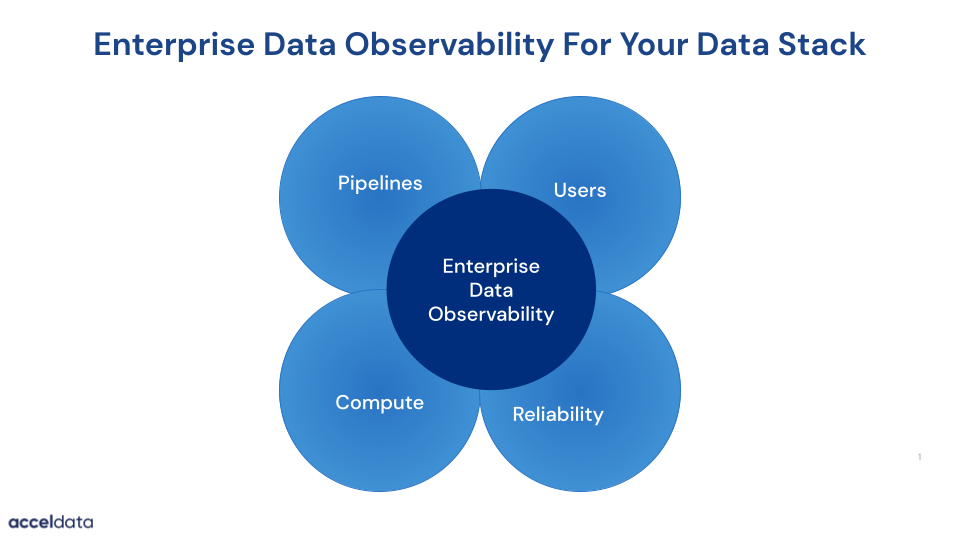The idea of a “Data Product” can be confusing if we mix functionality and build together without an understanding of the role of data as a whole.
Data products from a purely functional aspect can only mean one thing - a product that ingests, orchestrates, processes, analyzes, and delivers data in usable formats. However, from a build perspective, data products ultimately translate into products that utilize data to improve services and overall functionality. And if we were to go by this definition, it becomes clear that no product in the world can truly survive unless they are a “data product”.
In his book Data Jujitsu: The Art of Turning Data into Product (2012), former US Chief Data Scientist, DJ Patil defined a data product as “a product that facilitates an end goal, or result, through the intelligent use of data.”
Whether it’s to improve the UI/UX of the platform, boost customer satisfaction and engagement, or deliver actionable insights to an end user, data goes a long way in the ideation, conceptualization, RND, and maintenance of various products. For example, the famous Over-The-Top (OTT) streaming platform Netflix analyzed over 30 million daily streams and millions of subscriber ratings to understand the type of content their audience wants and prefers.
As we move through diverse industries and verticals, we realize that without data, products and services are one-dimensional and limited both in scope and potential to adapt. Hence, with the help of data, product teams can engage in continuous performance improvement.
4 Different Types of Data Products
While it is easy to get confused between “data products” and the concept of “data as a product”, the best way to differentiate the two would be to understand the different types of data products that exist across industries and domains, and the types of interfaces they employ.
1. Decision Support Data Product
We have been introduced to decision-support data products in the form of Google Maps and Apple Maps, which analyze different routes by analyzing data for factors such as traffic, roadblocks, and real-time incidents/accidents to plot the most ideal path for a driver. What this type of data product does is that it merely suggests alternative pathways for optimum results. Here, the interface is a website/device application.
2. Automated Decision Data Product
Could a self-driving car be considered a data product? Yes, because it uses various real-time data parameters surrounding spatial recognition, distancing, and object identification (Computer Vision) coupled with historic data to maneuver a car without any human intervention. In this example, the interface is the car itself.
3. Data Warehouse
A data warehouse is a much more complex data product, because it comprises a mix of raw unstructured data, derived/structured data, and an intelligent decision system to work on the data to deliver results or produce insights. The interface could be a PaaS website/landing page or SQL queries.
4. Recommendation Data Product
As the name suggests, these types of products utilize data to give intelligent recommendations that assist humans in making better decisions. For example, getting restaurant or car service recommendations involves an intelligent decision system that analyzes data pertaining to customer behavior/acceptance, reviews, and feedback to deliver the best options. The interface usually in this case is a website/application.
Data Product Development
“In God we trust, all others bring data.”
— W. Edwards Deming (Founding father of Total Quality Management)
Whether it’s to deliver insights, produce better recommendations, or simply automate a task from end-to-end, data forms the backbone of every product and service. Without data, products become ineffective and inefficient over time. Since data, or rather the quality of data, serves as the primary requirement for product development and enhancement, it becomes imperative for enterprises to be able to manage their data systems more efficiently.
The problem lies with the fact that data can often be manipulated, prone to errors, or experience performance glitches such as schema drift. When these things happen, product development gets skewed and the intended outcomes can never be achieved.
About Acceldata
Acceldata is the market leader in enterprise data observability. With Acceldata’s multi-layered data observability solution, enterprises gain comprehensive insights into their data stack to improve data quality, pipeline reliability, compute performance, and spend efficiency.
Data observability as a solution goes above and beyond just the routine monitoring of data pipelines or systems. It ensures teams are on top of breakdowns, and manages data across four layers: Users, Compute, Pipeline, and Reliability.

Acceldata's solutions have been embraced by global enterprises, such as Oracle, PubMatic, PhonePe (Walmart), Verisk, Dun & Bradstreet, DBS, and many more.
To learn more about our solutions and how we can help you take control of your data systems, get in touch with us today.
Photo by Tom Parkes on Unsplash



.png)



.png)






.webp)
.webp)